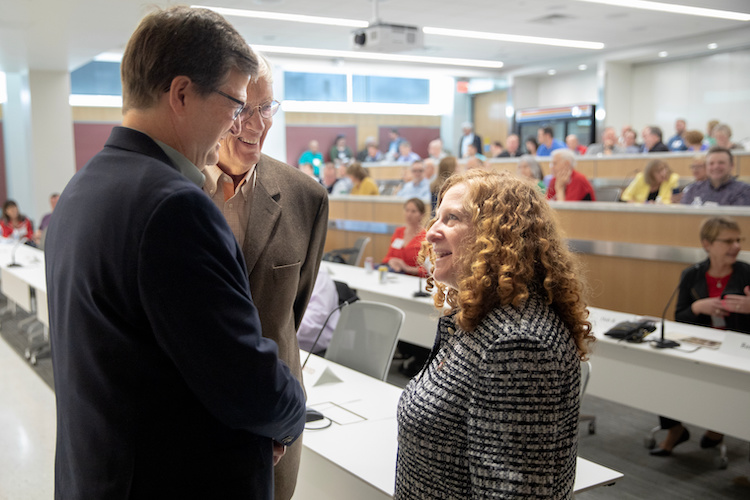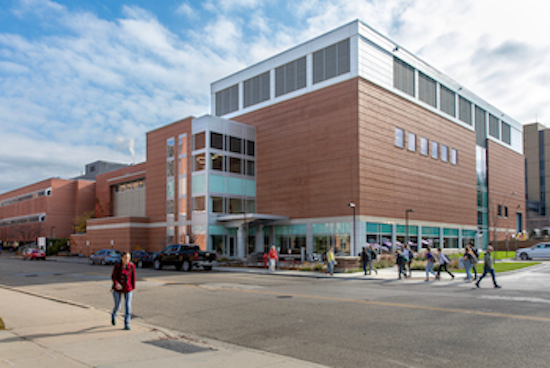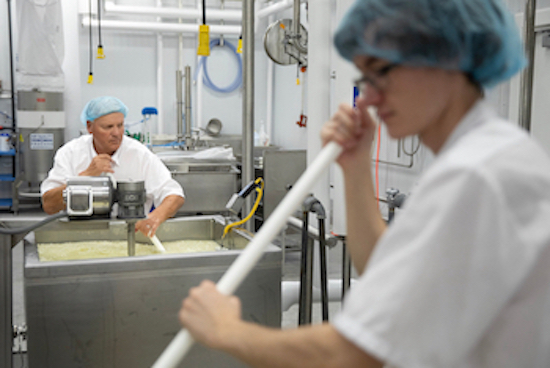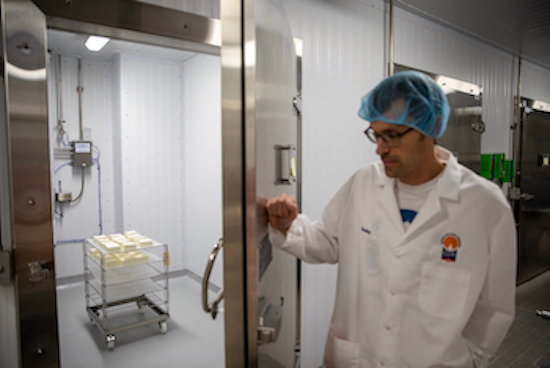
A new day has dawned on the University of Wisconsin-Madison campus. Originally home to the very first dairy foods short course in the United States back in 1890, the university has doubled down on dairy foods research by unveiling its recently completed $72.9 million renovation of Babcock Hall that’s home to the department of food science, the Babcock Hall Dairy Plant, the Babcock Hall Dairy Store, and the Center for Dairy Research (CDR).
“This is a great moment for Wisconsin,” stated the chancellor of the University of Wisconsin-Madison. “It was a massive project.”
It’s the CDR and its outreach efforts with the greater dairy industry that opened doors to unique fundraising possibilities. To help bring this effort to completion, nearly 200 donors eventually stepped forward to provide over $18 million to support the project. “The reason we were so successful is the fact we had a great staff,” said Lou Gentine of the staff at CDR and throughout the food science department. “That made fundraising easy,” continued the fundraising campaign co-chair.
While donations from the dairy community went a long way to creating a world-class dairy foods research facility, the state of Wisconsin and the University of Wisconsin-Madison also stepped up in a big way to provide $55 million to complete the project. Wisconsin State Senator Joan Ballweg, who chairs the Senate Committee on Agriculture and Tourism, played a big role in bringing the project to fruition. As a member of the state building commission, she worked hard to keep this unique project on track. Over the years, it went before the State Building Commission on three occasions due to its unique nature. “When you get the industry behind you, you will get something done,” shared Ballweg, describing that the $18 million in donations from the industry spoke volumes in moving the project forward. “You get more done when working together,” added Randy Romanski, Secretary of the Wisconsin Department of Agriculture, Trade and Consumer Protection. That working together involved industry, government, and the university.

Seeds for the future
The new and improved Babcock Hall makes it a global dairy destination and ideation center for dairy foods research. “There’s no facility like this in the U.S. and probably the world,” shared John Lucey, CDR director and food science professor.
While the new facility includes a completely renovated building, it’s the equipment found throughout that facility that will help all involved churn out new dairy product opportunities.
There’s a new two-story spray dryer and an aseptic pilot bottling plant. That spray dryer, sourced from Denmark, can dry milk in three stages and opens the doors to countless new products involving both milk and the wide array of whey. In the same vein, the aseptic bottling equipment will allow for the creation of more shelf-stable products that can remain safe for up to a year without refrigeration. Yogurt will also receive focus with state-of the art fermentation equipment.

Then there’s the mainstay — cheese.
When CDR joined the Babcock Hall space in 1986, Wisconsin was a mere infant in specialty cheese space, as only 2% of its milk went into the product. These days, the Badger State produces over 600 cheese varieties — more than all of Europe — and 25% of its milk goes into this high-end, specialty artisan cheese category. It’s important to note this growth in specialty cheese took place as the Wisconsin milk supply grew from 25.2 billion to 31.7 billion pounds for a 26% growth rate in milk output.
“My hope for the next 10 to 20 years is that we double the amount of specialty cheese made here in Wisconsin,” shared Lucey. “We have the best cheesemakers here and top-quality milk . . . we just need to keep working on innovation and looking at new products.”
To bring that about, the new Babcock Hall has invested in an immense amount of new processing equipment, even including a special copper-lined cheese vat to better produce alpine-style cheeses. However, the signature addition to the cheesemaking front would be the 10 cheese ripening rooms that can mimic nearly any cheese cave in the world. Each room has its own set of environmental controls that create specific conditions with regard to temperature, humidity, and airflow. These are all critical components in ripening cheese. In fact, it’s here where the science and art of cheesemaking meet. With this in place, dairy researchers can make nearly any type of cheese one desires.









